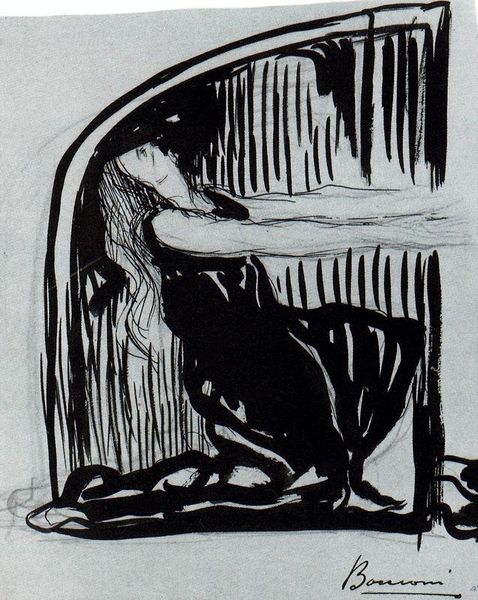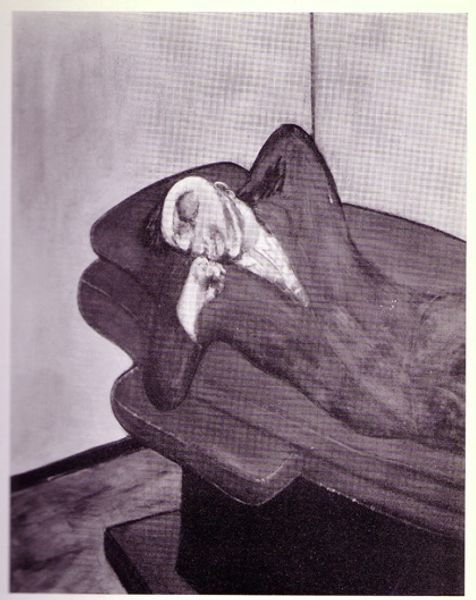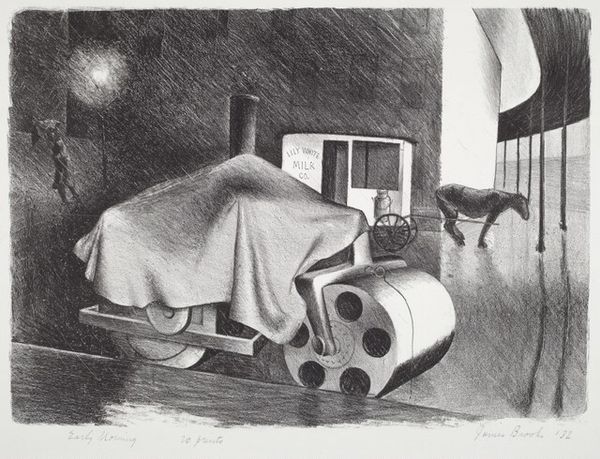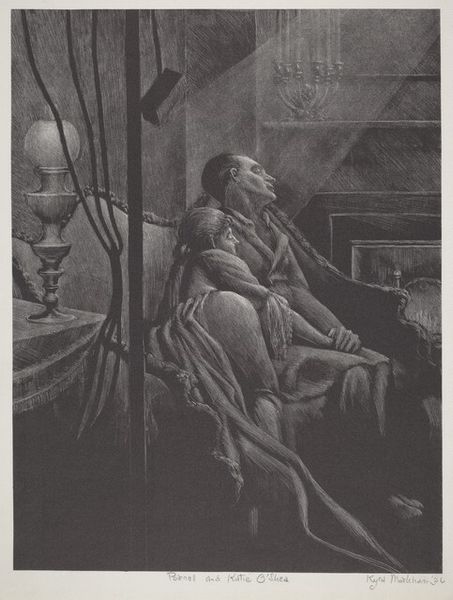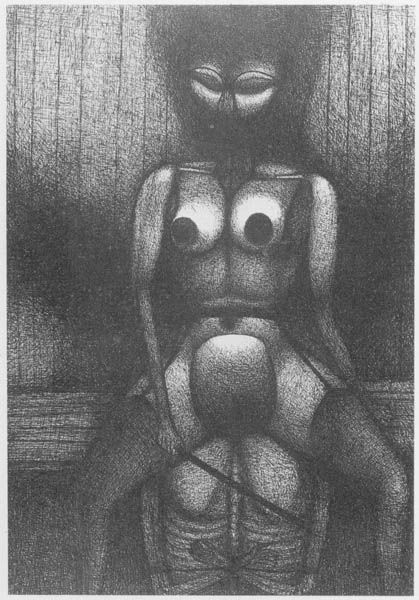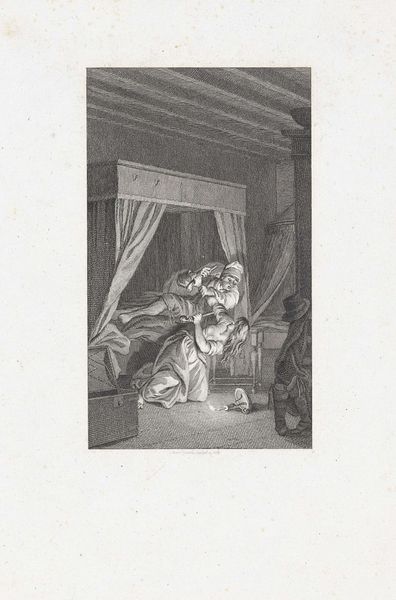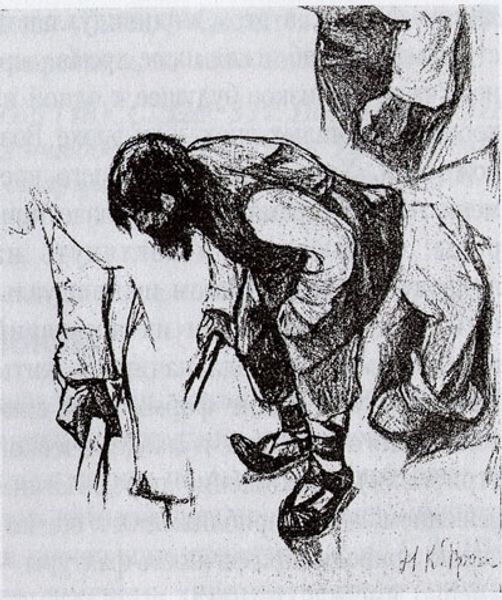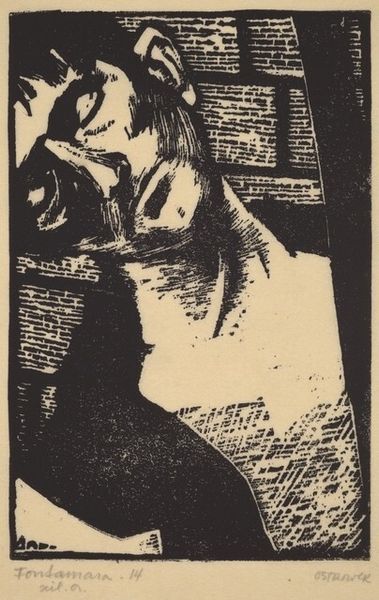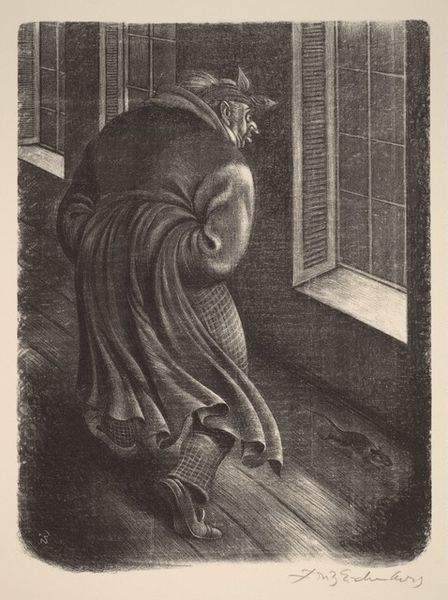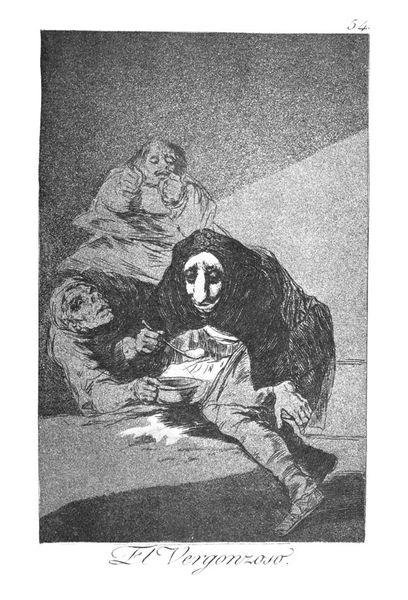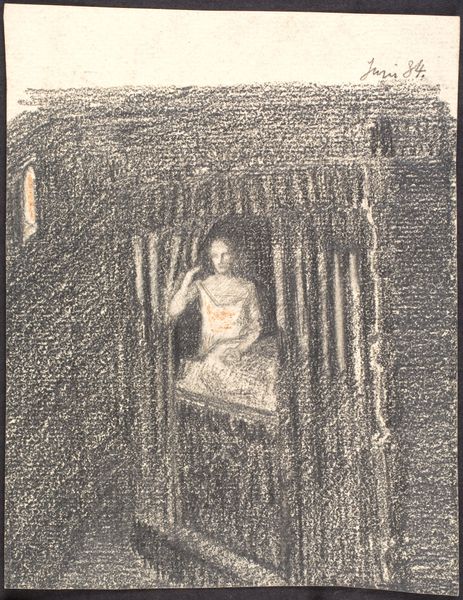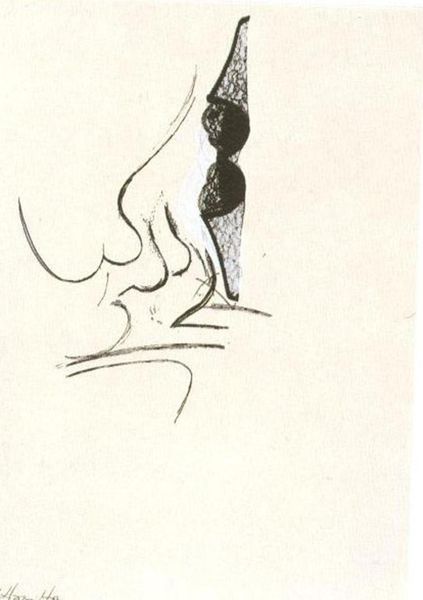
Dimensions: 198 x 147 cm
Copyright: Francis Bacon,Fair Use
Editor: We are looking at Francis Bacon’s 1961 charcoal drawing, "Crouching Nude". It’s quite unsettling. The figure is confined by harsh lines and seems to almost melt into the space. What formal elements stand out to you? Curator: Note the dominance of the monochromatic palette. This reduction in color, paired with the stark contrast between light and shadow achieved with the charcoal medium, focuses the viewer's attention on form and texture. Consider how Bacon has structured the space, with these geometric shapes acting almost as a cage. How do these formal arrangements affect your reading? Editor: I see what you mean about the geometric structure acting as a cage – it feels like the figure is trapped not just within the space of the drawing, but by the very composition itself. The distorted rendering of the human form emphasizes this tension further. It’s a portrait, yet the distortion pushes it towards abstraction. Curator: Precisely. Now, consider the lines themselves. They are frenetic and broken. This emphasizes a sense of instability. The textural variation achieved through the charcoal – smudging versus sharp definition – further disrupts a smooth reading of the figure. There's a constant push and pull between representation and something less literal. What would you say about the effect that has? Editor: That push and pull makes it intensely dynamic. It stops the viewer from settling on any one interpretation. Curator: Indeed. The drawing transcends a mere representation of a nude figure, instead becoming an exploration of form, space, and the potential for abstracting the human condition through masterful manipulation of medium and line. Editor: I now see it's about disrupting our understanding of portraiture, prioritizing emotional impact through its distorted forms and stark lines. Thank you!
Comments
No comments
Be the first to comment and join the conversation on the ultimate creative platform.
